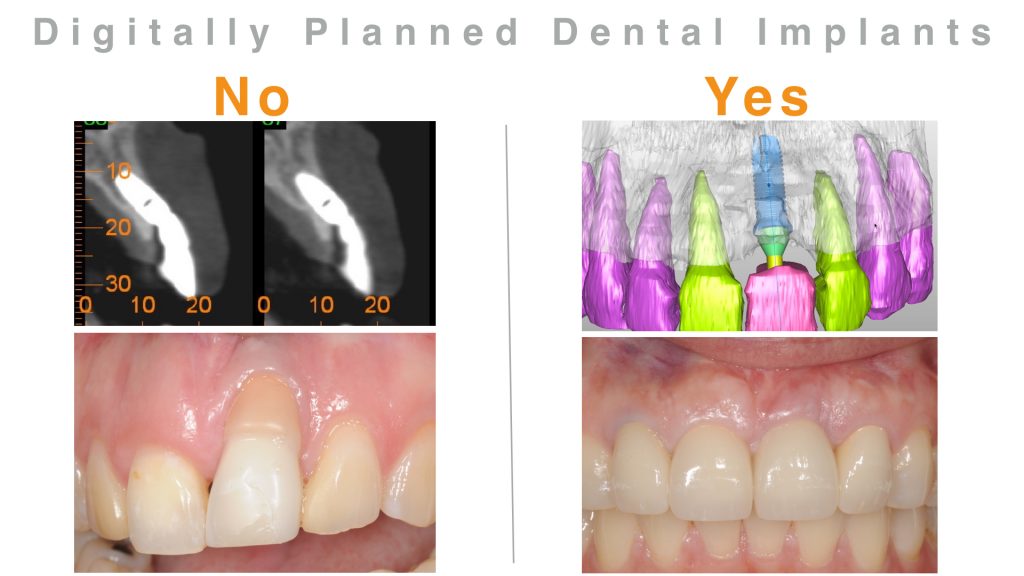You have missing teeth and want them replaced, giving you back the look and feel of natural teeth, and you want them to last a long time—preferably the rest of your life! Dental implants can certainly offer you all those benefits and more. However, the approach in planning, placement, and restoration of your dental implants makes all the difference in achieving the success you expect. Unfortunately, many dentists still utilize an old approach based on conventional dental x-rays and the use of stone models for their implant placement guide; many don’t even use a placement guide. This approach increases the risks of poor implant positioning which leads to failure, undesirable aesthetic outcomes, and functional complications.
Digital planning and computer-guided treatment is the only way to eliminate such complications and achieve safe and predictable results. With its high accuracy, ease of use, and low cost, digital planning is unquestionably the best approach in today’s dental implant therapy.
Here are the reasons why no implants should ever be placed without a full digital work-up and procedures:
- It allows the surgeon to place the implants with absolute precision critical for proper support of the overlying teeth
- It allows the surgeon to select the right size implants
- It eliminates the risk of damage to adjacent teeth, nerves, or perforation into sinuses
- It allows accurate diagnosis of bone quantity and quality which are critical for the long-term support of dental implants
- It optimizes aesthetic and functional outcomes and promotes longevity of the overall treatment
At Lifetime Dental Implants, EVERY dental implant treatment is provided using total digital planning and computer-assisted protocols:
- A CBCT (cone beam CT Scan) is obtained to assess the quality and quantity of bone.
- An optical scan (digital impression) is then taken which captures the anatomy of the teeth and gum tissue
- The CBCT (cone beam CT scan) and the optical scan are then merged to create a complete 3-dimensional digital model of the patient’s bone, gum tissue, and teeth.
- Using dental implant planning software, the teeth to be replaced are digitally designed and virtually placed in the computer model. This is essentially the prototype of the final teeth.
- Then using the same software, dental implants are virtually placed in the 3-D model with perfect alignment within the bone and the teeth they will support.
- Next, a CAD /CAM implant surgical guide is fabricated from the digital model using 3-D printing.
- The surgeon places the dental implants exactly as planned using the CAD / CAM surgical guide with absolute precision and accuracy.
- When indicated, temporary teeth are also digitally mastered, designed, and fabricated using 3-D printing. These temporary teeth can be delivered on the same day as dental implant placement.
- Once the implants have healed, the final restorations are digitally designed and milled for optimal precision and fit.
The decision to replace your missing teeth with dental implants requires the investment of your time and money. Demand that your dentist follow a strict digital treatment process. If they don’t offer digital work flow and want to do it the old way, then you are probably in the wrong place and should search for a new provider.

